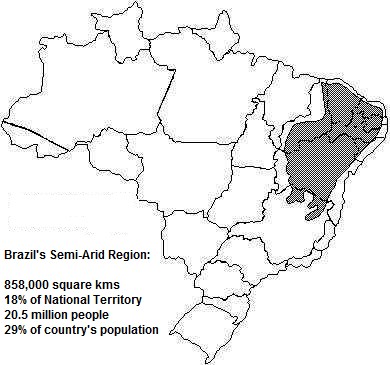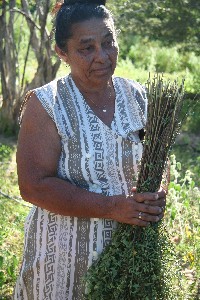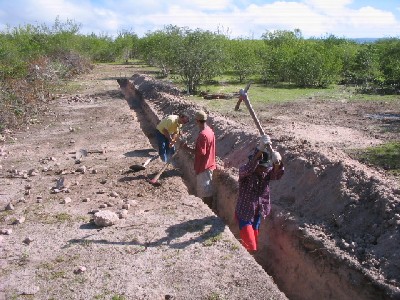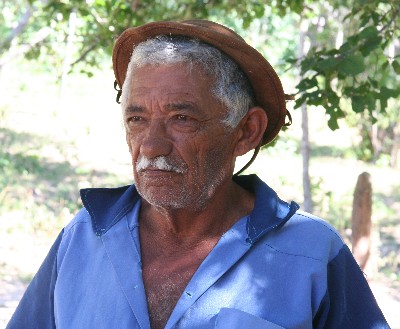Lessons from Northeast Brazil: “You can’t fight the environment”
I believe peasants from Northeast Brazil have a few important things to tell us about climate justice. For starters, the majority of the Northeastern region is dry. And it has been dry since the last glacial period. Also, the Northeast region where I come from is the largest and most populated semi-arid region on the planet, home to 20.5 million people mostly of indigenous and Afro-Brazilian descent.
Because of droughts and lack of water in the past, masses of hungry peasants were forced to migrate to other regions in Brazil.
As climate change accelarates, billions of people throughout the globe will be affected in the same way. Life in the Northeast region, for one, will become unbearable. And more people will be forced to migrate. And I can say that many of my fellow northeasterners have no desire to leave their home.

I know several peasant families, such as Seu Né and Dona Maria, who would agree with me on this. I met Seu Né and Dona Maria during my college years in the Agriculture School, when I was facilitating participatory research on agroecological practices.
My team and I were hungry and looking for a place to stay for the night. Dona Maria and Seu Né were our contacts in the Raso da Catarina, one of the driest places I have been to.

Seu Né and Dona Maria
Dona Maria didn’t have much room in her house, but she offered her living room and kitchen floor. That night I went to bed late, entertained with the stories of Seu Né and Dona Maria. Both were born and raised in the semi-arid region or “sertão,” as this dry region is known in Brazil.
Despite all the challenges of a drought-prone place, they raised a family of five. Food and money for education came from farming the land with the available local resources.

Seu Né and Dona Maria are some of the farmers that helped to develop a rainwater catchment system that collects scarce rainwater from rooftops and stores it in a round-shaped cistern. Proudly, they told us the story of how the cistern can supply their domestic needs during all 12 months of the year. In “good” years, scattered rains in the Raso da Catarina fall in only three months.
Dona Maria explained to our group of young agronomists that this problem could be avoided if policies were implemented in a different way. Instead of fighting the environment, policies should be based on respecting the environment and local people’s knowledge. Peasant families in Northeast Brazil call it “living in harmony with the dry environment”.
Based on this wisdom and leadership of rural families, new technologies – like the cistern – have been developed to catch and store rainwater for domestic use and food production. Seu Né and Dona Maria are members of Polo Sindical, a Grassroots partner, and they are teaching others about these practices.

A cistern of 16,000 cubic meters can supply enough water for a family of five
This learning exchange between families is simple. Farmers like Seu Né and Dona Maria volunteer to build a prototype of the cistern. Other families witness the success and the eventual problems and construct theirs with the help of other community members and Polo Sindical.
Since these technologies are not complicated and materials are available locally, everyone is able to build and teach others. Also, the idea behind this low-cost and low-tech water infrastructure is to democratize the access to water. So, local organizations, like Polo Sindical, are helping to build them in schools and community centers. Instead of constructing mega dams, which have a large social and environmental impact, these technologies are small-scale and managed by the families.
As Seu Né reminded us 15 years ago in his living room with no electricity, families often fall prey to local politicians that are eager to exchange votes for a bucket of clean water.
Fake solutions to climate change such as the expansion of monocrop plantations of sugar cane and palm oil is on the policy-makers’ agenda in Brazil. The current Lula Administration is working to build two new large dams and a nuclear plant, and to divert the water from the São Francisco River. This is the largest investment in the past many years to irrigate plantations of sugar cane in the dry Northeast region. Sugarcane that will be converted to ethanol for export.

Construction of an underground dam. The underground dam stores the water in the soil and enables farmers to produce food in dry regions.
In practice, these development policies will divert public money away from supporting food and water sovereignty and security of farmers, like Seu Né and Dona Maria, to construct inadequate infrastructure to produce energy and food for other regions or for export. The result of these ill-advised policies is that families are set back in their hard work to build a better life. Many are forced to leave for unknown places and to adjust to a new environment. From food producers and experts on resource management, they become low-skilled workers in factories. Many will be forced to become homeless and beg for food in urban slums.
The links between climate justice and food and energy sovereignty was another lesson we learnt from Seu Né and Dona Maria, even though we did not talk about it in quite those terms. We were engaged in a conversation about the history of suffering and hope in our region and the local alternatives to solve the problem. Nevertheless, today, remembering the wise words of Seu Né and Dona Maria, I realize that we did not need to say “climate justice” and “food sovereignty” to express the need for change.
In sum, on that breezy night, we all agreed that the solutions are simple. But they first demand that we understand the problem in a different way.

